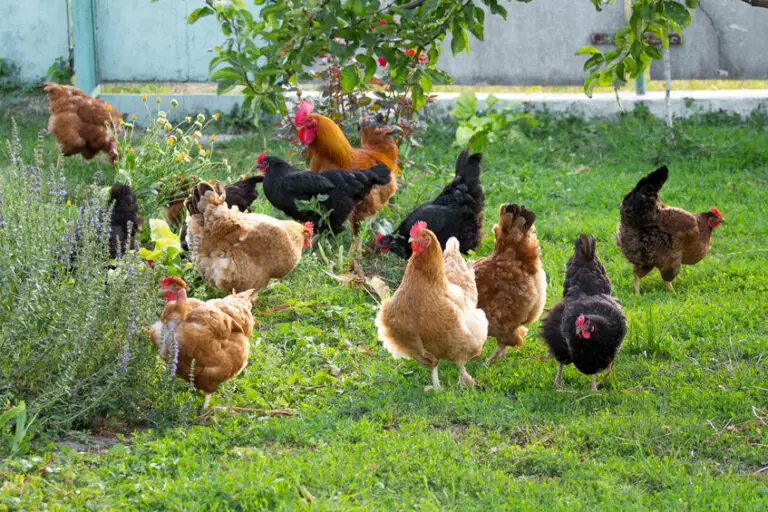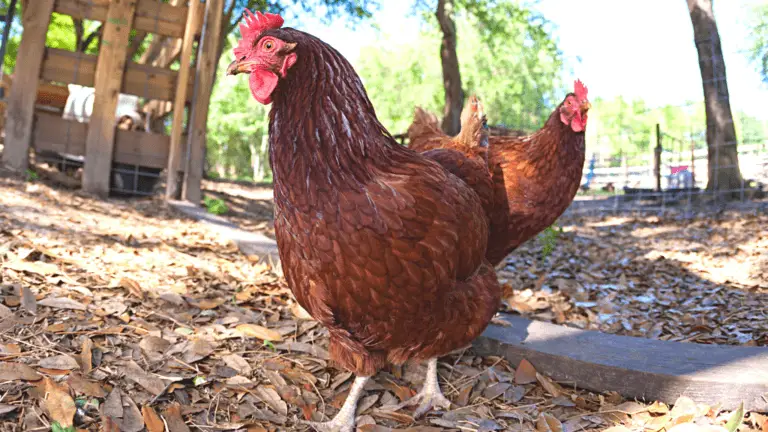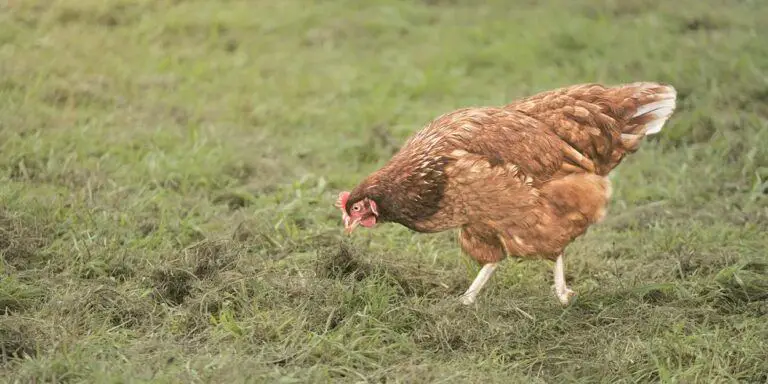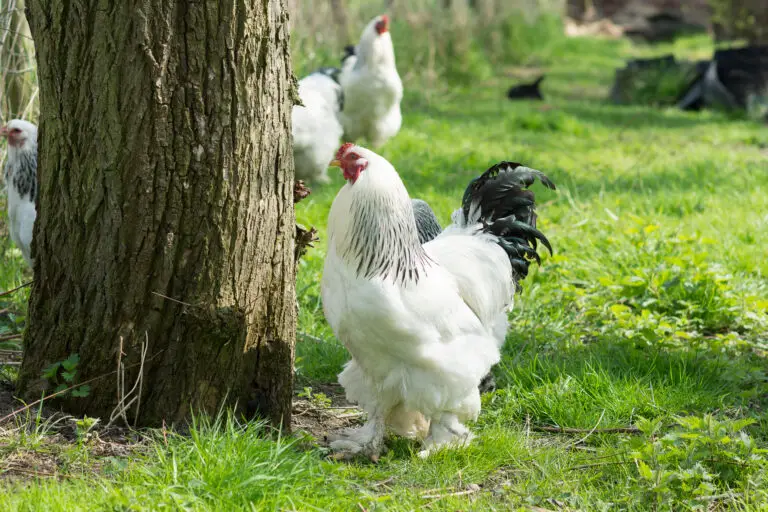Top 12 Small Chicken Breeds
For our fellow backyard chickeneers and those beginning your journey in raising backyard chickens, we have a treat for you! We are discussing the top 12 small chicken breeds.
If you’re looking for some small breeds of chickens that stand out above the others in appearance and personality, we’ve got you covered! We have some show-stoppers that will turn your backyard into a place of entertainment, companionship, and just plain ole fun!
If you’re looking purely for great egg layers, see this article.
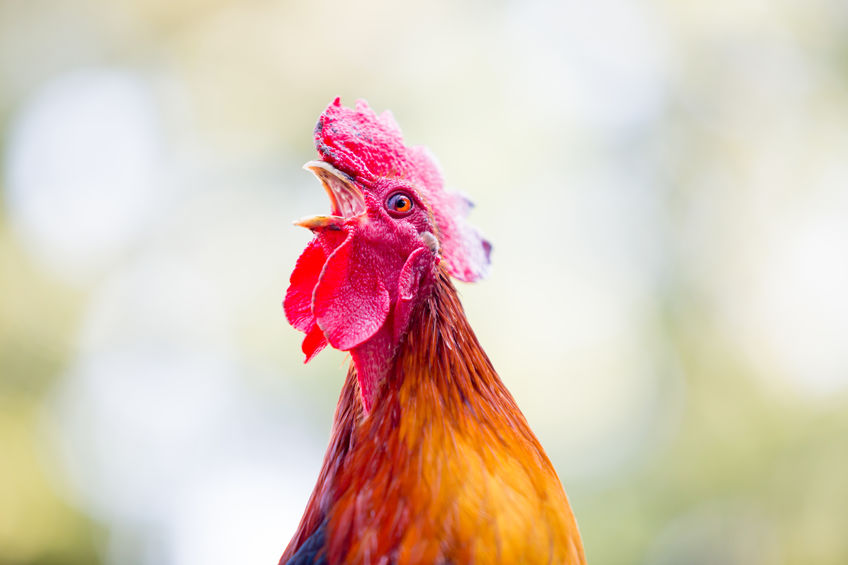
Bantams Are Small Chicken Breeds
When you hear the term “miniature” or “teacup” chicken, it’s referencing a smaller breed of chickens. These smaller breeds are called “bantams.”
Don’t let people fool you out there trying to sell dwarf, miniature, or teacup chickens because they just don’t exist. By slapping on an attractive adjective to “bantam,” sellers are doing nothing more than trying to get you to buy.
Bantam chickens are a smaller version of a regular chicken breed, such as the Barred Rock Plymouth. This breed can have regular-sized Barred Rock chickens and also bantam size. Some other bantam chickens are a breed unto themselves without a correlating larger size counterpart.
They are a fourth the size of a full-size chicken. In the chicken breed world, you have different sizes of chickens.
- Smallest – bantam
- Medium to Full Size
- Large
- Extra-large/Giant
Where did bantams come from?
So, where exactly did these little bantam chickens come from? Researchers are still trying to nail down the “phylogenetic status” (genetic origin) of a bantam chicken. However, they do know that Southeast Asia is the starting point where the first bantam chicken came into being.
It’s quite puzzling, to say the least! Chickens over time have been evolving from their ancestor, the Red Jungle Fowl (Gallus Gallus.) Selective breeding and breeding in the wild has created a host of chicken breeds that we come to know and love today.
Raising Bantam Breeds
Bantam chickens are ideal for raising in backyards because of their size, less noise, and friendly disposition. If you are really into collecting eggs, remember that bantam chickens produce small eggs. That would mean if you are baking a cake that calls for 1 egg, you may need to use 2-4 bantam eggs!
All humor aside, we will show you the good, bad, and ugly when it comes to raising bantams, so when you choose one of the twelve breeds we go on to recommend, you will know what to expect.
Pros And Cons
| PROS | CONS |
| Temperament – Friendly, Docile, Great with kids | Hardiness – Some breeds can’t tolerate heat or cold. Be sure to do a little research on a specific breed you’re interested in. |
| Diet – Same as regular size chickens, Eat much less | Diet – You will need to feed them more often because of their fast metabolism. |
| Housing – Don’t require a large coop or run as regular size chickens do. | Housing – If you have a breed that isn’t weather-hardy, you will need to make adjustments by adding fans/heaters. |
| Hardiness – Many breeds are cold/heat hardy | Manageability and Care – Bantams are fast runners and high-flyers. Because of this, you will need to keep them contained in an area that prevents them from escaping. Bantams have feathered feet which will require regularly cleaning. |
| Care – Fairly easy to take care of | Egg Production – These chickens produce small eggs and a smaller amount of eggs compared to regular size chickens. |
| Lifespan – Live as long as regular size chickens do | Pecking Order Problems – Introducing bantams to an established/larger size flock may result in your bantam being bullied or picked at. Bantams are at the bottom of the pecking order in chickens. |
| Entertaining and fun to watch | Shorter legs – Bantams will have trouble walking in tall grass. |
Our Top 12 Recommended Small Chicken Breeds
Serama
This is the smallest chicken breed in the world. You can hold them within the palm of your hand. Their average weight is about 1 pound. Their eggs are very small. Five of their little eggs is the equivalent of one regular size egg!
- Temperament: super sweet and friendly
- Plumage: all colors, feathers upright
- Size: 6-10” tall, 1 lb.
- Hardiness: >40 degrees (F)
- Eggs: 4/week, white/brown
- Other: continuous moulters, always on alert and upright

Polish Frizzle Bantam
- Temperament: docile, friendly, startles easy, nervous, flighty
- Plumage: color and pattern varies, beautiful pom-pom head crest
- Size: 4 ½ to 6 pounds
- Hardiness: not cold hardy
- Eggs: not good brooders, unreliable egg producers
- Other: facial feathers need routine trims

Birch Cochin Bantam
- Temperament: docile, friendly
- Plumage: black, white, greenish sheen
- Size: 1.6 lbs – 1.75 lbs.
- Hardiness: cold hardy
- Eggs: off-white
- Other: n/a
Silkie
- Temperament: very friendly
- Plumage: black, white, gray, blue, and other colors
- Size: 2-4 lbs.
- Hardiness: cold hardy
- Eggs: off white, 3/week
- Special Features: their feathers stand out in color because of their black skin.
Barred Rock Bantam
- Temperament: docile and friendly
- Plumage: black/white stripes
- Size: 1 ½ – 2 lbs.
- Hardiness: cold hardy
- Eggs: brown, 4/week
- Special Features: these bantams have the same color/patterns as the regular size do.
Buff Cochin Bantam
- Temperament: friendly and curious
- Plumage: tan/cream
- Size: 1 ½ – 2 lbs.
- Hardiness: cold hardy
- Eggs: brown, 2/week
- Special Features: these bantams have the same color as the regular size does.
Splash Cochin Bantam
- Temperament: gentle, friendly
- Plumage: white/blue-gray
- Size: 1 ½ – 2 lbs.
- Hardiness: cold hardy
- Eggs: brown, 3/week
- Special Features: heavily feathered feet
Easter Egger Bantam
- Temperament: super sweet
- Plumage: variety of colors
- Size: 2 – 2 ½ lbs.
- Hardiness: cold hardy
- Eggs: pink, green, blue, 5-6/week
- Special Features: beautiful pastel-colored eggs
Silver Sebright Bantam
- Temperament: friendly, flighty, skittish
- Plumage: stunning silver/white lacelike pattern
- Size: 1 ½ – 2 ½ lbs.
- Hardiness: cold hardy
- Eggs: poor egg producer
- Special Features: susceptible to Marek’s disease

Phoenix Bantam
- Temperament: friendly, skittish
- Plumage: white/silver/black
- Size: 1 ½ – 2 ½ lbs.
- Hardiness: cold/heat hardy
- Eggs: light brown, poor egg producer
- Special Features: beautifully ornamental

Scots Dumpy Bantam
- Temperament: quiet, docile
- Plumage: black, silver/gray
- Size: 1 ½ – 2 lbs.
- Hardiness: heat/cold hardy
- Eggs: off-white, not a great producer
- Special Features: has a funny duck-like waddle
Sabelpoot (Booted) Bantam
- Temperament: friendly
- Plumage: variety of colors
- Size: 1 – 1 ½ lbs.
- Hardiness: cold hardy
- Eggs: white, 2/week
- Special Features: looks just like the Belgian Barbu d’uccle
The Last “Cluck”
If you are looking for some sweet little chickens (bantams) that are feisty and friendly with features that certainly won’t go unnoticed, our twelve recommendations will not disappoint. Keep in mind that bantams are not prolific layers and not really intended for meat. These hand-size chooks are more companion yard birds for us city-folk that lack the open range of the country.
Happy “chickening!”


